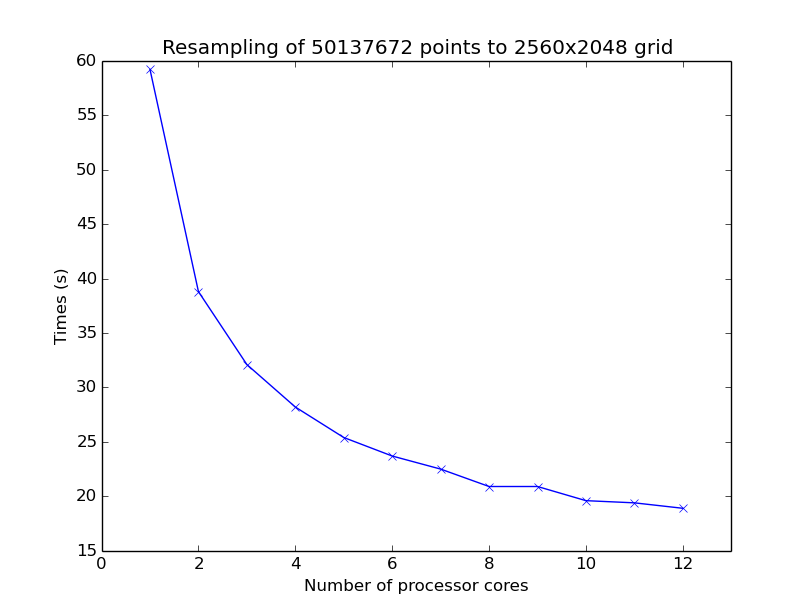Using multiple processor cores
Multi core processing
Bottlenecks of pyresample can be executed in parallel. Parallel computing can be executed if the pyresample function has the nprocs keyword argument. nprocs specifies the number of processes to be used for calculation. If a class takes the constructor argument nprocs this sets nprocs for all methods of this class
Example of resampling in parallel using 4 processes:
>>> import numpy
>>> from pyresample import kd_tree, geometry
>>> area_def = geometry.AreaDefinition('areaD', 'Europe (3km, HRV, VTC)', 'areaD',
... {'a': '6378144.0', 'b': '6356759.0',
... 'lat_0': '50.00', 'lat_ts': '50.00',
... 'lon_0': '8.00', 'proj': 'stere'},
... 800, 800,
... [-1370912.72, -909968.64,
... 1029087.28, 1490031.36])
>>> data = numpy.fromfunction(lambda y, x: y*x, (50, 10))
>>> lons = numpy.fromfunction(lambda y, x: 3 + x, (50, 10))
>>> lats = numpy.fromfunction(lambda y, x: 75 - y, (50, 10))
>>> swath_def = geometry.SwathDefinition(lons=lons, lats=lats)
>>> result = kd_tree.resample_nearest(swath_def, data.ravel(),
... area_def, radius_of_influence=50000, nprocs=4)
Note: Do not use more processes than available processor cores. As there is a process creation overhead there might be neglible performance improvement using say 8 compared to 4 processor cores. Test on the actual system to determine the most sensible number of processes to use.
Here is an example of the performance for a varying number of processors on a 64-bit ubuntu 14.04, 32 GB RAM, 2 x Intel Xeon E5-2630 with 6 physical cores each:
